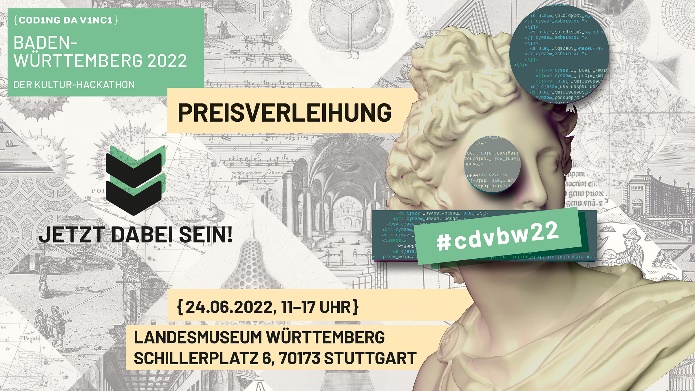Coding da Vinci
Coding, hacking, tinkering with culture data
In 2022, Badisches Landesmuseum and other cultural institutions from Baden-Württemberg jointly held the Coding da Vinci cultural hackathon to develop new ideas for the future of museums.

Badisches Landesmuseum follows the general policy of making data available under the open license CC-0, and it prepared and provided the dataset WeltKultur/GlobalCulture for the event.
This pre-curated dataset illustrates that the cultures of this world have always been in exchange with each other: Certain phenomena have reappeared again and again over the course of time or have been purposefully revisited. Other ideas developed in parallel across borders at the same time and independently of each other. Encounters that show the familiar in the unfamiliar and thus the notion that we are not divided by different cultures, but that mankind is connected by a common world culture, run like a red thread through these collection records.
As they are published under open license, those records lend themselves to making new contexts visible via machine learning methods. At the hackathon itself, a newly released multimodal AI method was used by Jan Sölter to test to what extent new contexts and thus new paths through the collection can be opened up via simultaneous processing of text and image.
Following the major culture hackathon, which concluded in Baden-Württemberg after a total of 14 events starting in 2014, all data was mapped to Wikidata with an AI-supported tool in a nationwide workshop. This joint initiative of the Coding da Vinci office, MFG Baden-Württemberg, Landesmuseum Württemberg and TIB Hannover aimed at making sustainable access to cultural data machine-readable and bundled for retrieval. In this way, digital culture remains networked, sustainable and openly available and reusable.

Resources
Coding da Vinci: General information: https://codingdavinci.de/en/node
The dataset provided by Badisches Landesmuseum: https://codingdavinci.de/de/daten/weltkultur-global-culture
Video on the dataset (YouTube)
Hackathon podcast (MfG Baden-Württemberg)
All Coding da Vinci data on Wikidata